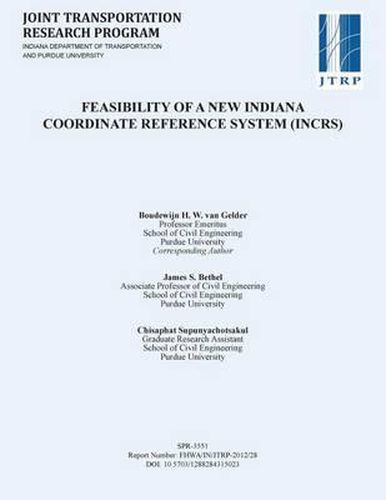Readings Newsletter
Become a Readings Member to make your shopping experience even easier.
Sign in or sign up for free!
You’re not far away from qualifying for FREE standard shipping within Australia
You’ve qualified for FREE standard shipping within Australia
The cart is loading…






Engineers, Surveyors, and GIS Professionals spend an enormous amount of time correcting field surveys to the classical State Plane Coordinate System (SPCS). The current mapping corrections are in the order of 1:33,000, or 30 parts per million (ppm). Modern surveys (e.g., GPS/InCORS) have an accuracy of a few parts per million. Whenever original surveys made on the surface of the Earth need to be reduced to a mapping reference surface, surveyed distances and angles (azimuths) need to be corrected. Measured distances need to be corrected for two scale factors: 1) due to the mapping scale inherent in conformal mappings, and 2) due to terrain heights. Measured angles (azimuths) need to be corrected for so-called convergence angles. The application of these necessary corrections is time consuming and may add an estimated 15 to 20% to the cost of a survey. The omission of these corrections corrupts the reliability of survey results. A new Indiana Coordinate Reference System (INCRS) allows for so much smaller corrections that when omitted the errors committed are small, and may be even neglected for surveys less accurate than a few ppm. In a few areas of Indiana (e.g. Clark County), terrain heights corrections are still needed because these corrections due to the terrain roughness are at the 14 ppm level. Not only reduces the proposed INCRS reduces the scale factor from 30 ppm to a few ppm, but also the convergence angles are reduced by a factor of four (from about 0.5 degree to about 7-8 arcminutes).
$9.00 standard shipping within Australia
FREE standard shipping within Australia for orders over $100.00
Express & International shipping calculated at checkout
Engineers, Surveyors, and GIS Professionals spend an enormous amount of time correcting field surveys to the classical State Plane Coordinate System (SPCS). The current mapping corrections are in the order of 1:33,000, or 30 parts per million (ppm). Modern surveys (e.g., GPS/InCORS) have an accuracy of a few parts per million. Whenever original surveys made on the surface of the Earth need to be reduced to a mapping reference surface, surveyed distances and angles (azimuths) need to be corrected. Measured distances need to be corrected for two scale factors: 1) due to the mapping scale inherent in conformal mappings, and 2) due to terrain heights. Measured angles (azimuths) need to be corrected for so-called convergence angles. The application of these necessary corrections is time consuming and may add an estimated 15 to 20% to the cost of a survey. The omission of these corrections corrupts the reliability of survey results. A new Indiana Coordinate Reference System (INCRS) allows for so much smaller corrections that when omitted the errors committed are small, and may be even neglected for surveys less accurate than a few ppm. In a few areas of Indiana (e.g. Clark County), terrain heights corrections are still needed because these corrections due to the terrain roughness are at the 14 ppm level. Not only reduces the proposed INCRS reduces the scale factor from 30 ppm to a few ppm, but also the convergence angles are reduced by a factor of four (from about 0.5 degree to about 7-8 arcminutes).